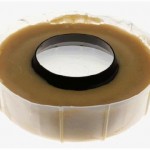 OK, that title is convoluted at best. But it’s more attention-grabbing than the first title I tossed up there: Silicone Caulk–Use With CAUTION. Yeah, after typing that, I almost fell asleep. So I changed the title in the hopes of infusing it with energy and lively interest.
OK, that title is convoluted at best. But it’s more attention-grabbing than the first title I tossed up there: Silicone Caulk–Use With CAUTION. Yeah, after typing that, I almost fell asleep. So I changed the title in the hopes of infusing it with energy and lively interest.
Anyway, if you read the earlier post about cheese graters, you’ll realize what I’m getting at here. If you missed the post about cheese graters . . . well, you need to check it out (here!).
The point of that post was to poke fun at myself and stress the point that there are certain items out there . . . in the wide, scary world . . . that look innocent, but can really screw up your day. Cheese graters and dental picks are just a couple.
Today, we’re shifting back into the world of home improvements and were going to talk, as the title suggests, about the Cheese Grater of the Home Improvement World: Silicone Caulk.
See, silicone caulk, if you’re not familiar with it, is a type of caulk that sticks tenaciously to almost any surface. It’s also extremely water resistant. Those two qualities make it tremendously useful . . . but also, “sneakily” dangerous.
Let me explain: silicone caulk is so resistant to almost everything, that nothing . . . NOTHING . . . will stick to it. It repels water, moisture, paint and even itself. And that’s where the danger lies.
Every now and then, folks pick up a tube of silicone caulk by accident at a home improvement warehouse. They just wander down an aisle, grab a tube and take it home. Then, they go ahead and do all their caulking. They caulk around their woodwork, around their windows, around their crown molding . . . they caulk everywhere.
And then, after all that work is done, they start painting. And that’s when they notice that the paint doesn’t seem to be sticking. At all. Wherever they applied their caulk, they discover the paint won’t adhere.
Now normally, when this happens, people are sad. They’re frustrated. They’re angry. But they’re usually not flipping out yet. And this is because they don’t understand the nature of silicone caulk. They figure they’ll just buy some new caulk–some paintable caulk–and they’ll put that over the silicone. Or, worst-case-scenario, they’ll prime all the silicone caulk with a special primer before they paint. Either way, they figure there’s a relatively simple solution.
But unfortunately, there’s not. As I mentioned earlier, nothing will stick to silicone caulk. I even used ALL CAPS to express that idea. Nothing will stick to silicone–not even silicone. And that means the only way to truly fix the problem is to remove the caulk. Completely.
Now, for some people, caulking and painting a room is bad enough. Not everybody wakes up every morning, just longing for another paint job to accomplish. But even if you like painting and caulking, nobody likes caulking, painting, discovering a problem, removing the caulk, scrubbing the walls, re-caulking and finally re-painting. That’s just no fun at all.
And that’s why I’m suggesting that silicone caulk needs to be used with caution. In the right situation, it can’t be beat. In a bathroom, between your tub surround and your tub, it’s ideal. But in an area where you plan to do some painting . . . avoid it like the plague.





 I’ve got a number of tubes of caulk in my basement, on my shelves, that are dried out. And that number is 10. Yes. Ten 1/2 full or 3/4 full tubes of caulks of assorted colors and types that have all dried out.
I’ve got a number of tubes of caulk in my basement, on my shelves, that are dried out. And that number is 10. Yes. Ten 1/2 full or 3/4 full tubes of caulks of assorted colors and types that have all dried out.
 OK, that title is convoluted at best. But it’s more attention-grabbing than the first title I tossed up there: Silicone Caulk–Use With CAUTION. Yeah, after typing that, I almost fell asleep. So I changed the title in the hopes of infusing it with energy and lively interest.
OK, that title is convoluted at best. But it’s more attention-grabbing than the first title I tossed up there: Silicone Caulk–Use With CAUTION. Yeah, after typing that, I almost fell asleep. So I changed the title in the hopes of infusing it with energy and lively interest.